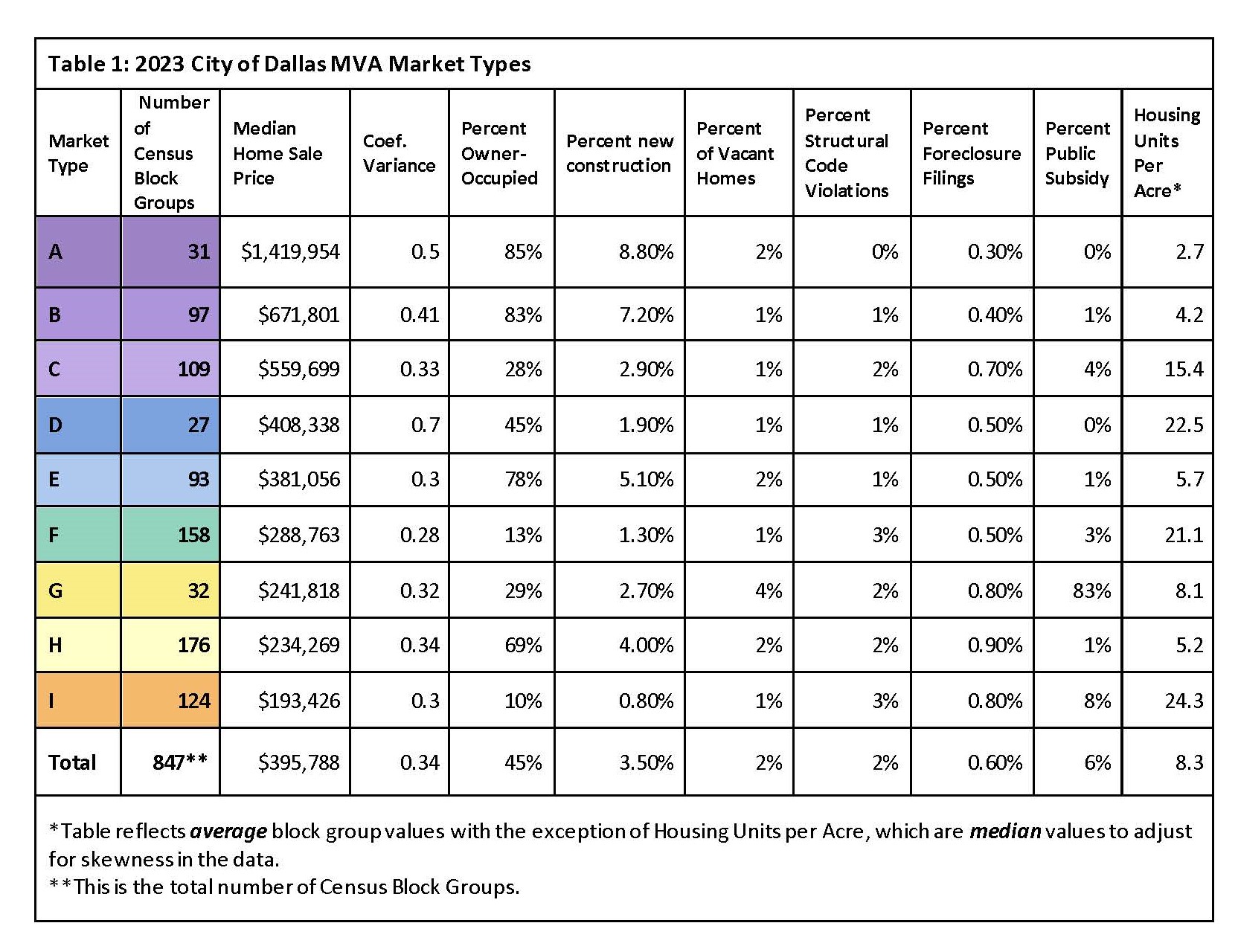A recent analysis of Dallas home values found that no area has lost value over the past five years. Because of this, potential home buyers making the city's median income of $58,200 are being priced out. The most newly constructed homes in Dallas are single-family homes selling for a median price of $1.4 million.
In a memo earlier this month, Dallas Assistant City Manager Majid Al-Ghafrey revealed the results of a new market value analysis that will help with long-term planning for various city departments. The last time such a study was commissioned was in 2018.
“MVA is a tool for neighborhood revitalization and investment that directs intervention not only where it is needed, but also where public investment can stimulate private market activity and leverage larger revitalization efforts. It is a tool for
This new analysis divides the city into nine housing market types, with A being the most expensive and I being the least expensive. The criteria considered value, investment, financial stress, depletion rates, and vacancy rates across specific census block groups. Al Ghafri said the composition of these market types has changed significantly since 2018. These changes mean fewer places for the average Dallas homebuyer to find homes in their price range.
“Due to each group's income, lack of affordability impacts Hispanic and Black households in Dallas more than any other racial or ethnic group,” he wrote.
These changes have forced more people to flee as prices in once affordable areas have increased significantly. The analysis found that displacement was particularly pronounced in West Dallas, South Dallas, and Deep Ellum. Median home prices in Cedar Crest, West Dallas and Oak Cliff have increased significantly, moving up one category since 2018. There are no neighborhoods in Dallas where prices are declining, according to the report. The market types that saw the most significant increases in home sales prices were at the lower end of the spectrum, as demand for more affordable housing exceeded supply.
And the city's analysis isn't the only evidence that home prices here have increased significantly. Industry analyst Construction Coverage examined Zillow's home price data to identify the cities with the largest increases in home prices. In third place is Dallas, where prices have increased 175 percent over the past 10 years.
The new MVA map helps visualize this trend. Areas around Preston Hollow, Far North Dallas, East Dallas, Uptown and Oak Cliff are at the top of the market spectrum. The farthest areas of northwest Dallas and southwest Dallas are in the middle of the range, while south Dallas and farthest east of Dallas are in the weakest market types.
Some takeaways from the analysis:
Newest structure market type It is not considered affordable for residents with incomes near the median. This is a Type A market with a median home sales price of $1.4 million. Almost 9% of the homes in this bracket are new construction. In second place is Type B, with a median price of $671,801, of which 7.2 percent are new construction.
Market types with the most vacant homes Type G has a median home sale price of $241,818. Approximately 4 percent of the homes are vacant, and only 29 percent are occupied by owners. In the higher priced categories A and B, at least 80% are owners. (As for the last group, I own the least home at 10% of him.)
More than 330 of the city's 847 census blocks 237 companies fall into the G, H, or I market type group, whereas 237 companies belong to the A, B, or C groups. Almost 40 percent of the city's housing stock falls into this submarket type, with the middle of the range accounting for approximately 30 percent.
Affordability is further away than ever. Even in Type I, the median home sale price is nearly $200,000. Most housing finance experts say a buyer needs to have an income of at least $62,000 a year to afford a home in that range. That's nearly $4,000 short of Dallas' median income.
As affordable housing advocates and the city develop long-term plans to add housing to Dallas, determining how to make homeownership affordable for more people will continue to rely on smart public policy Not only that, but it will also depend heavily on the vagaries of the market.
author

Bethany Erickson
View profile
Bethany Erickson is D Magazine. Throughout her career, she has written about real estate, education policy, the stock market, and crime, sometimes simultaneously. She hates lima beans and 5 a.m. and takes her SAT practice tests for her fun.


